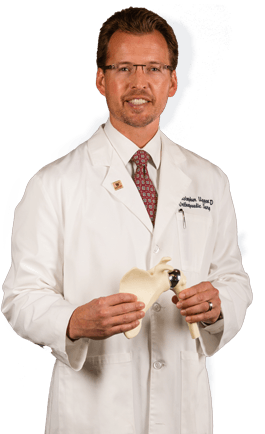Knee Arthritis
Arthritis is a general term covering numerous conditions where the joint surface or cartilage wears out. The joint surface is covered by a smooth articular surface that allows pain-free movement in the joint. This surface can wear out for a number of reasons, often the definite cause is not known.
When the articular cartilage wears out, the bone ends rub on one another and cause pain. This condition is referred to as osteoarthritis or “wear and tear” arthritis as it occurs with aging and use. It is the most common type of arthritis.
What are the causes of arthritis?
There are numerous conditions that can cause arthritis, but often the exact cause is never known. In general, but not always, it affects people as they get older (osteoarthritis). Other causes include:
- Trauma (fracture)
- Increased stress such as overuse and overweight
- Infection of the bone
- Connective tissue disorders
- Inactive lifestyle and Obesity (overweight)- Your weight is the single most important link between diet and arthritis, as being overweight puts an additional burden on your hips, knees, ankles and feet.
- Inflammation (Rheumatoid arthritis)
What are the symptoms of arthritic knee?
Knee Arthritis causes pain and decreased mobility of the knee joint. In the arthritic knee there is an decreased joint space that shows on X-ray. In the normal knee there is a normal joint space.
The cartilage lining is thinner than normal or completely absent. The degree of cartilage damage and inflammation varies with the type and stage of arthritis. The capsule of the arthritic knee is swollen. The joint space is narrowed and irregular in outline, this can be seen in an X-ray image. Bone spurs or excessive bone can also build up around the edges of the joint. The combinations of these factors make the arthritic knee stiff and limit activities due to pain or fatigue.
How is knee arthritis treated?
Knee arthritis causes inflammation and inflammation causes pain. Treatment includes activity modification, weight loss, ice, anti-inflammatory medications, and physical therapy. Occasional cortisone injection and / or lubricating injections (viscosupplementation) may also help. If mechanical symptoms develop from concurrent meniscus tears or cartilage flaps, arthroscopy to trim the meniscus and cartilage can be considered. Finally, if pain persists and limits quality of life, knee replacement is an option.













